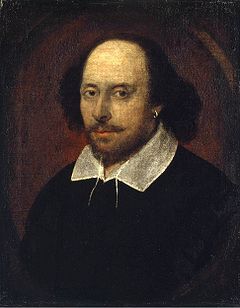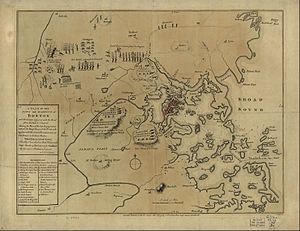Cross posted from The Stars Hollow Gazette
Last week I wrote about the use of tourniquets in a pre-hospital emergency to save someone from bleeding to death. Tourniquets were used very effectively in Boston and were a key factor in getting so many to the hospital alive. At the finish line there were two medical tents with cots, blankets and IV fluids to treat dehydrated, hypothermic runners. Both were staffed with doctors and nurses. An emergency-room physician from Georgia, Dr. Allan Panter, was waiting at the finish line for his wife. He was just 10 yards a way from the first explosion. He assisted with victims and after went to the tents to assist. He described the events:
While there was some initial chaos in a medical tent near the finish line, and some screaming and moaning by victims, it was generally an orderly scene, Dr. Panter said. He assisted others in wheeling in a female victim who died, he said. He described 20 to 30 cots in the tent with IV bags that had been intended for dehydrated runners.
At least eight doctors and what seemed to be 20 or more nurses were stationed in the tent. A man with a microphone stood in the center of the tent to coordinate medical care. Arriving victims were assessed and categorized as 1 for critical, 2 for intermediate, 3 for “can wait” and “black tag” for anyone who appeared to be dead, Dr. Panter said. An emergency medical technician outside the tent coordinated ambulance service to hospitals.
“All in all, it was a pretty controlled environment,” said Dr. Panter, who has been an emergency-room physician for 30 years. “I’ve seen a lot worse. They were without question ready – not ready for those type of injuries, but they were prepared.”
There usually aren’t those provisions or medical staff on site and this still required the actions of bystanders to help control bleeding and move patients to the tents and ambulances. The night after the bombings on MSNBC’s “The Last Word,” host Lawrence O’Donnell spoke with Dr. Lyle Micheli, the head physician at the finish line and Massachusetts General Emergency Room Nurse Meghan McDonald about their experience:
But what happened in the hospitals was even more critical. It wasn’t like the ER’s were empty and waiting for these patients. As Nurse McDonald described in the interview Massachusetts General hospital had 90 patients being treated, waiting for admission or discharge when the explosions happened. The other four other ER’s that would receive the bulk of the casualties were in not much better shape. Luckily they all have similar disaster plans in place and have frequent drills to keep the staff prepared. Prepared they were. Of the initial 170 patients the five level one trauma centers received that day only one patient, who arrived in cardiac arrest, died. The other two fatalities were pronounced dead at the scene. That is a quite a feat and a testament to the training and skills of the doctors, nurses and other support staff. This article in the New York Times describes how Massachusetts General Hospital handled the disaster:
The first priority for those who were severely injured was to prevent them from dying, often from bleeding to death. Many had tourniquets on their legs when they arrived at the hospitals. But that was just a temporary measure to slow the bleeding. They needed immediate surgery to get their bleeding under control and prevent muscles and nerves from dying for lack of blood. [..]
That requires a vascular surgeon to repair the torn blood vessels and restore blood to legs and feet that may no longer have a blood supply. To do those repairs, surgeons often sew in part of a vein from the other leg, if it is uninjured, or from an arm. Or they use a synthetic tube.
Meanwhile, an orthopedic surgeon must stabilize a bone that might be flopping because it is fractured in several places. Surgeons do that with a temporary solution – they drill into the bone from outside the leg and attach pins that they screw into a metal bar also outside the leg.
Plastic surgeons clean the wound. In this case, blast victims had BBs or nails or debris embedded in their legs and feet. Everything the surgeons took out of the wounds was placed in plastic bags for the F.B.I., said Dr. Samuel J. Lin, a plastic surgeon at Beth Israel Deaconess Medical Center who helped care for blast victims.
“The crime scene extends to the hospital,” Dr. Lin said.
It’s definitely an art. It might appear chaotic to the casual beholder as everyone seems to be moving and talking at once. Each staff member has his or her job and is looking and listening so as not to miss details. Usually there is one coordinator, in situations like this there are some times more, as the ER is sectioned off into areas that depend on the patient’s status. Life threatening are first, then go back to treat and repair everything else. The decision to amputate a limb is not made lightly and is done most often to save a patient’s life. The other reason is that the bone, tissue and vascular damage is so severe there is no other option. The doctors in Boston had the luxury of having an immediate second opinion, it doesn’t always happen that way in combat zones or parts of the third world.
MSNBC’s Rachel Maddow saluted the thorough, professional and remarkably successful performance of the medical professionals who responded to the emergency injuries of the Boston Marathon Bombings and kept the public informed with honest straightforward briefings.
“Who ever came in alive, stayed alive.”
Dr. George Velmahous, Chief of Trauma Surgery, Massachusetts General Hospital
Thank you to all. Well done.

 On this day in 1859,
On this day in 1859, 

 On this day in 1564,
On this day in 1564,  On this day in 1978,
On this day in 1978, 
